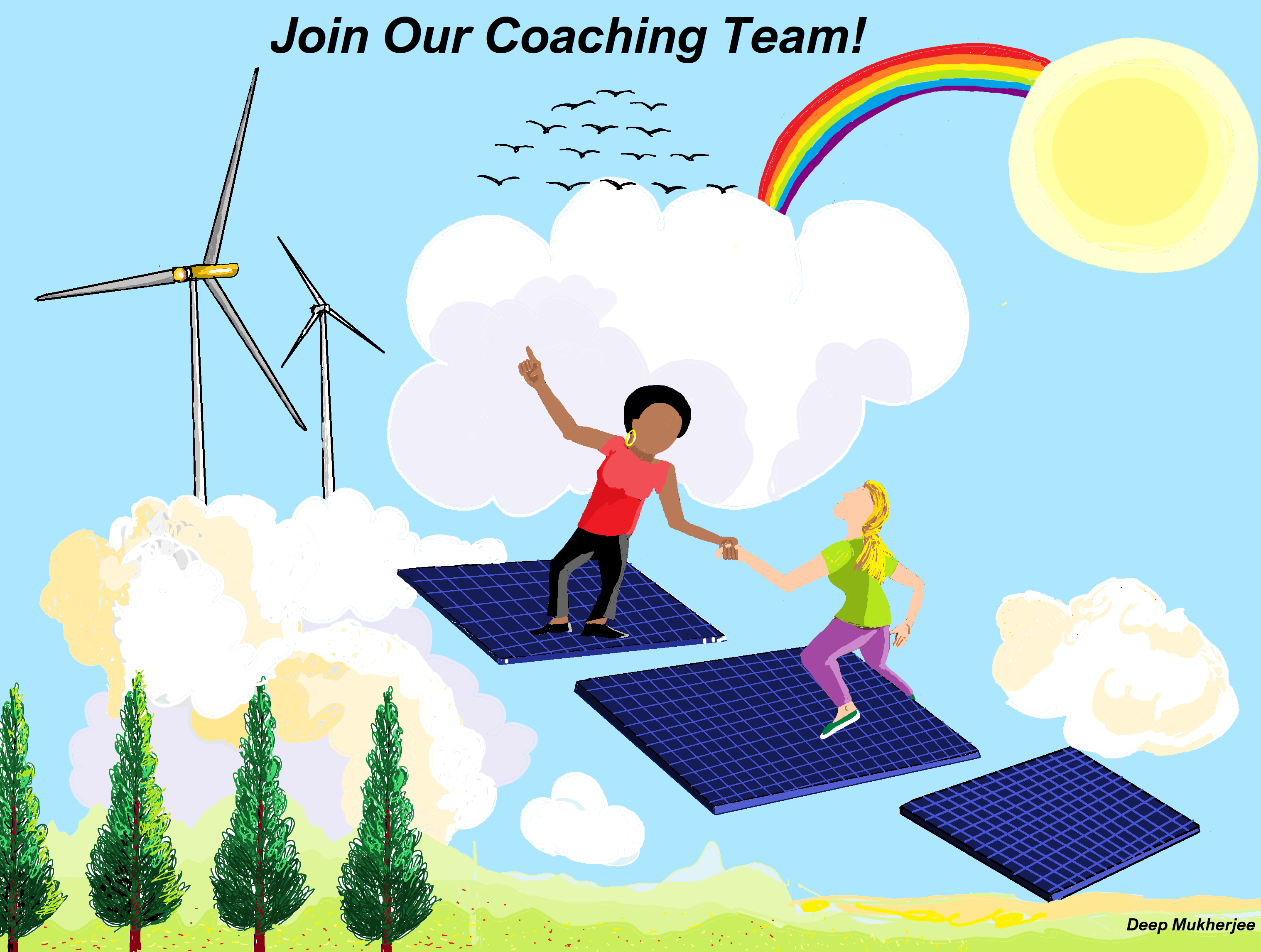In 2018, I was hired at the Sierra Club as a distributed organizer. I have since organized roughly a dozen national mobilizations aimed at blocking or passing federal legislation, and for me, the key ingredient for success regardless of demands, decision-makers, and geographies has been a national volunteer coaching team that focuses on mentoring and supporting Sierra Clubbers in taking action in their communities.
Coaching brings the magic of relationships, mentorship, and leadership development to any large-scale organizing plan. Coaching is key to shifting a mobilization from something transactional—focused solely on achieving certain outcomes or metrics—into something transformational—where people leave the action seeing themselves and the world around them in a new light. Whether you are organizing a dozen pickets across a city for a day of action, lobby visits during a congressional recess, or hundreds of rallies for a national mobilization, coaching will help translate the energy and initial expressions of interest into power and action, while creating the space and structure for everyone involved to build new relationships, learn from each other, and grow as leaders and organizers.
I discovered the power of coaching as a distributed organizer in the middle of the Trump era. In the first two years of that administration, the Sierra Club gained roughly one million new members and supporters, and it was my job to organize them.1 There were plenty of opportunities to mobilize people to the streets, and that felt enough at first. However, my colleagues and I soon realized that we needed to do more to alchemize this new energy into grassroots power that could shift the culture and politics in our members’ communities. To me, this meant ensuring that everyone who took action with us left with a deeper understanding of who currently holds power, and their role in redistributing that power to the people. I also wanted activists to leave each action feeling more confident in themselves and their ability to build power in their communities and shape their futures. This would require more than just showing up to a protest. This would require conversation, action, reflection, and mentorship.
As Trump’s attacks on the environment grew worse, we encouraged our members and supporters to register their opposition by visiting their members of Congress in person during each Congressional recess, or by hosting community events to activate their friends and neighbors. I hosted trainings, made toolkits, sent emails and texts, and hosted office hours. I felt certain I had done all I could to support our volunteers. However, the results were dismal. Our sign-up numbers were high, but the rate of people who actually went to their member of Congress’s office or hosted an event were so low, they were basically nonexistent. In my first lobby-focused mobilization, less than one percent of signups completed their action.
I quickly noticed a simple pattern: If I talked on the phone and coached someone through their lobby plan and next steps, they usually did it. If I had not had a personal phone call with the person, even if they came to trainings, read my toolkits, or replied to texts, they would not do it and often disappeared back into the internet as just another name on my list. It was as if that one phone call, geared at coaching and relationship-building, pulled them out of my spreadsheet and into the real world. I’m sure for them, that call pulled me out of their inbox and into their reality, too.
Through coaching, we became real to each other, building enough trust and accountability to move forward.
I began to notice other programs2 had built coaching into their campaigns, and decided to replicate that for my work as well. But as one organizer attempting to support hundreds if not over a thousand activists who want to take meaningful action in their communities, I knew it was not possible for me to coach everyone. I realized that if I wanted to succeed in my federally focused Resist Campaign, I was going to also need to build a coaching team to distribute the work of relationship building, action support, and mentorship.
I started slowly, building a coaching team of just three people at first. I oriented coaches to their new roles by focusing on what makes a good mentor and how to structure coaching conversations. Even the small jump from one to three coaches led to seven lobby visits the next time around, triple what we’d been able to achieve during the last Congressional recess.
A few months later, I grew our coaching team to over 20 volunteer coaches, and we successfully organized Sierra Club activists across the country to host over 80 lobby visits for the Green New Deal in 2019. Coaching was leading to exponential growth. In 2021, a team of 25 coached 200 potential event hosts as part of our Change Powered by People mobilization. This spring, our coaching supported dozens of the over 100 art parties that took place as part of the Fight for Our Future Earth Day mobilization.

Activists, supported by the Sierra Club coaching team, host events for the Green New Deal.
The coaching team completely changed the feel of my work. I now had a diverse team of volunteers with whom I was building deep relationships, and we had the security of growing our own skills together as a team. I was learning from the coaches on my team and helping them develop as leaders in their own community. This effect rippled out to the activists that they coached in turn. Each team meeting my coaches would share a new story of working through goals and challenges with new Sierra Club activists.
In just that first year of coaching, I could feel the magic. One coach who was a recent high school graduate in Alabama was coaching a current high school student in Texas on how to work the Green New Deal into her senior project. A coach in Vermont supported a Sierra Club member in Wisconsin who was struggling with a myriad of health and logistical challenges. Eventually, she was able to complete a successful lobby meeting with her member of Congress’s office. When I chatted with the Wisconsin activist, she told me she never thought she could do something like that, and decided to become more active in a local organization in her community. A coach in Baton Rouge met up in person with her mentees in New Orleans to complete their lobby meeting together, forming a new activist crew that organizes together to this day.
Finally, I believe that coaches grow as much as those being coached. If you choose to incorporate coaching into your organizing, not only will it allow you to support masses of activists in a deeper way, you are also creating an opportunity for your members and supporters to grow their own organizing skills through the practice of coaching. The coaching team is still going strong four years later, and it is my favorite part of the work I do. Some team members have been working with me for all four years, and I have had the honor of watching them grow as leaders both with the Sierra Club and in their communities.
If you are wondering how to translate interest, excitement or even rage in your community into organizing efforts, consider the power of coaching. Too often, organizers consider mentorship or coaching as a given; something that happens along the way. Or worse, it is not considered at all. Instead, I encourage organizers to be intentional about incorporating coaching into their work up front. Build it into your team structures, your trainings, your campaign plans. By coaching those we organize with, and training them to coach others, we have an opportunity to distribute the work of mentorship across our organizing spaces, ensuring that people are building relationships and growing as activists and individuals, and that we as a movement are achieving our goals.

1. Note: The majority of Sierra Club members are supported by their local chapters and groups. However, chapters focus primarily on state and local issues, so I was uniquely charged with organizing these members around federal issues.
2. Specifically, the Sierra Student Coalition and Ready for 100.
